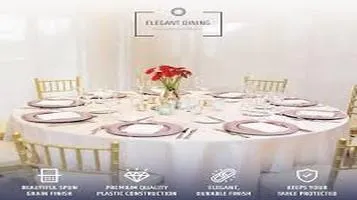Scandinavian Coffee Tables: A Harmonious Blend of Functionality and Aesthetics
Scandinavian coffee tables are a hallmark of minimalist design, embodying the principles of simplicity, functionality, and elegance. These tables often feature clean lines, natural materials, and a neutral color palette, making them versatile additions to any living space. Typically crafted from high-quality woods like oak, walnut, or ash, they emphasize durability and timeless appeal. Scandinavian design focuses on functionality, so many of these tables incorporate practical elements such as storage compartments or multi-level surfaces. The sleek, understated aesthetics of Scandinavian coffee tables allow them to seamlessly blend into various interior styles, from contemporary to rustic. Their emphasis on natural light and space complements open, airy environments, enhancing the overall ambiance of a room while providing a practical surface for everyday use.

The timeless appeal of Scandinavian design has captivated homeowners and interior designers for decades. Originating from the Nordic countries of Denmark, Norway, Sweden, Finland, and Iceland, Scandinavian design is renowned for its emphasis on simplicity, functionality, and natural beauty. In the realm of furniture, Scandinavian coffee tables stand out as quintessential examples of this design philosophy. In this review, we delve into the key features, benefits, and potential drawbacks of Scandinavian coffee tables, providing a comprehensive overview of why these pieces have become a staple in modern homes.
Design and Aesthetics
One of the most striking aspects of Scandinavian coffee tables is their minimalist design. Characterized by clean lines, understated elegance, and a lack of unnecessary ornamentation, these tables effortlessly blend into a variety of interior styles. Whether your living room is decorated in a contemporary, rustic, or eclectic manner, a Scandinavian coffee table can seamlessly integrate into the space.
Scandinavian design often employs a neutral color palette, with shades of white, gray, and beige predominating. This choice of colors not only enhances the sense of space and light but also allows the natural beauty of the materials to shine through. Wood, a staple material in Scandinavian furniture, is frequently used in coffee tables. Light woods such as ash, beech, and pine are favored for their warmth and ability to create a cozy, inviting atmosphere. The natural grain and texture of the wood are typically left exposed, further emphasizing the connection to nature that is central to Scandinavian design.
Functionality and Practicality
Scandinavian coffee tables are not just about aesthetics; they are also designed with practicality in mind. The functionality of these tables is evident in their thoughtful design features. Many Scandinavian coffee tables come with built-in storage options, such as shelves or drawers, providing a convenient place to store magazines, remote controls, and other living room essentials. This focus on practicality ensures that the tables not only look good but also serve a useful purpose in everyday life.
The simplicity of Scandinavian design also means that these coffee tables are often lightweight and easy to move around. This can be particularly beneficial for those who like to rearrange their living room frequently or for smaller spaces where flexibility is key. Moreover, the versatility of Scandinavian coffee tables means that they can be used in various settings, from the living room to the bedroom or even as a side table in a hallway.
Quality and Craftsmanship
Scandinavian coffee tables are renowned for their high quality and exceptional craftsmanship. The attention to detail in the construction of these tables is evident in the precision of the joinery and the smoothness of the finishes. Scandinavian designers have a long-standing tradition of valuing craftsmanship, and this is reflected in the durability and longevity of their furniture.
Many Scandinavian coffee tables are made from sustainably sourced materials, reflecting the region's commitment to environmental responsibility. The use of solid wood and natural finishes not only enhances the aesthetic appeal of the tables but also ensures that they are built to last. Investing in a Scandinavian coffee table means investing in a piece of furniture that can withstand the test of time, both in terms of style and durability.
Potential Drawbacks
While Scandinavian coffee tables have many advantages, there are a few potential drawbacks to consider. The minimalist design, while appealing to many, may not suit everyone's taste. Those who prefer more ornate or elaborate furniture might find Scandinavian coffee tables too plain or simplistic.
Additionally, the emphasis on natural materials and craftsmanship can sometimes result in higher prices compared to mass-produced alternatives. While the investment is often justified by the quality and longevity of the furniture, it may not be feasible for those on a tight budget.
Finally, the light color palette that is characteristic of Scandinavian design, while beautiful, can be more susceptible to showing stains and wear. This may require more careful maintenance to keep the table looking its best over time.
Conclusion
In conclusion, Scandinavian coffee tables epitomize the harmonious blend of functionality and aesthetics that defines Scandinavian design. Their minimalist and versatile design makes them a perfect fit for a variety of interior styles, while their practical features and high-quality craftsmanship ensure that they are as functional as they are beautiful. Although they may not appeal to everyone and can sometimes come with a higher price tag, the investment in a Scandinavian coffee table is one that is likely to pay off in terms of both style and durability. For those who appreciate the principles of simplicity, functionality, and natural beauty, a Scandinavian coffee table is an excellent choice for any living space.






